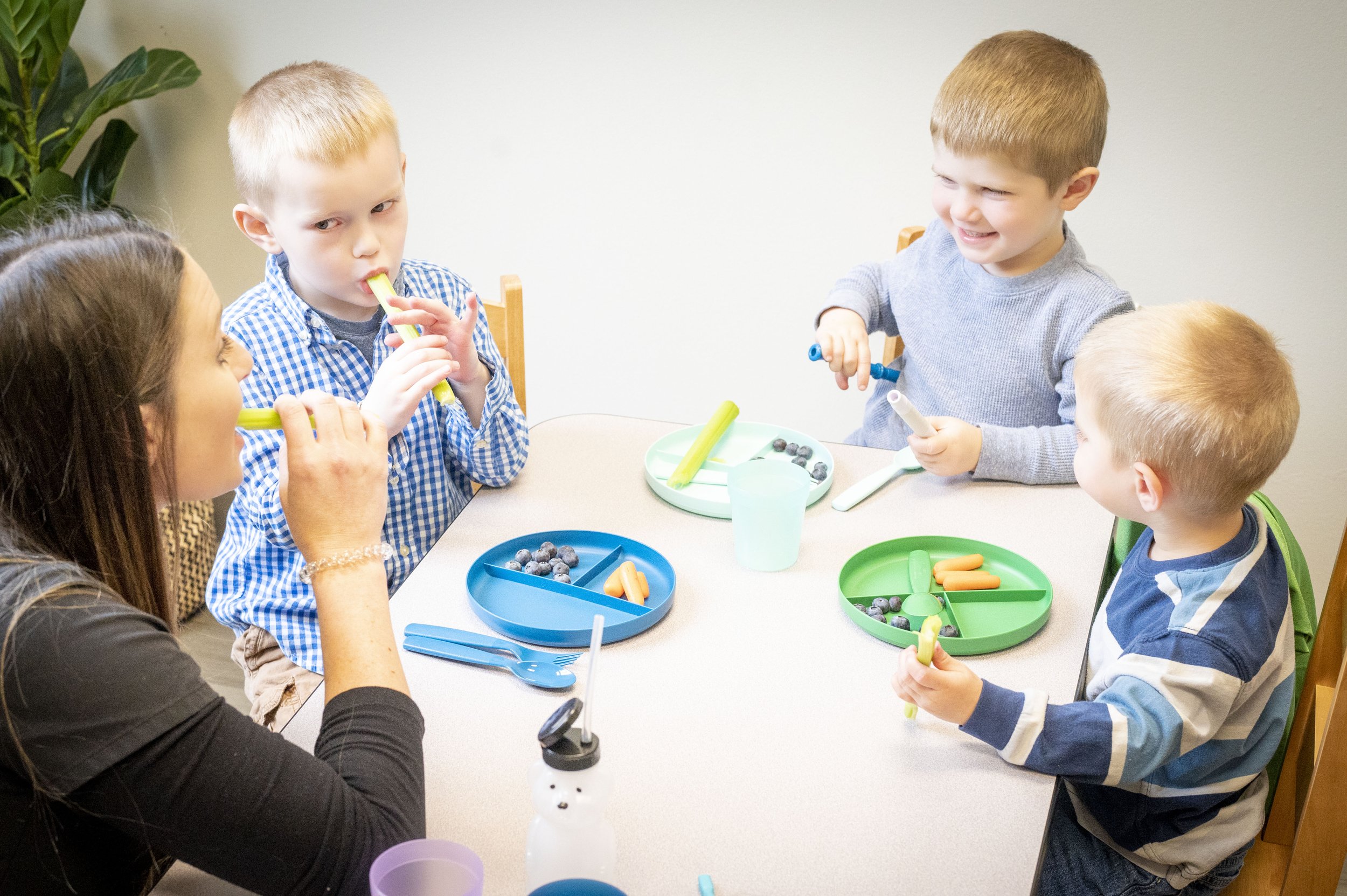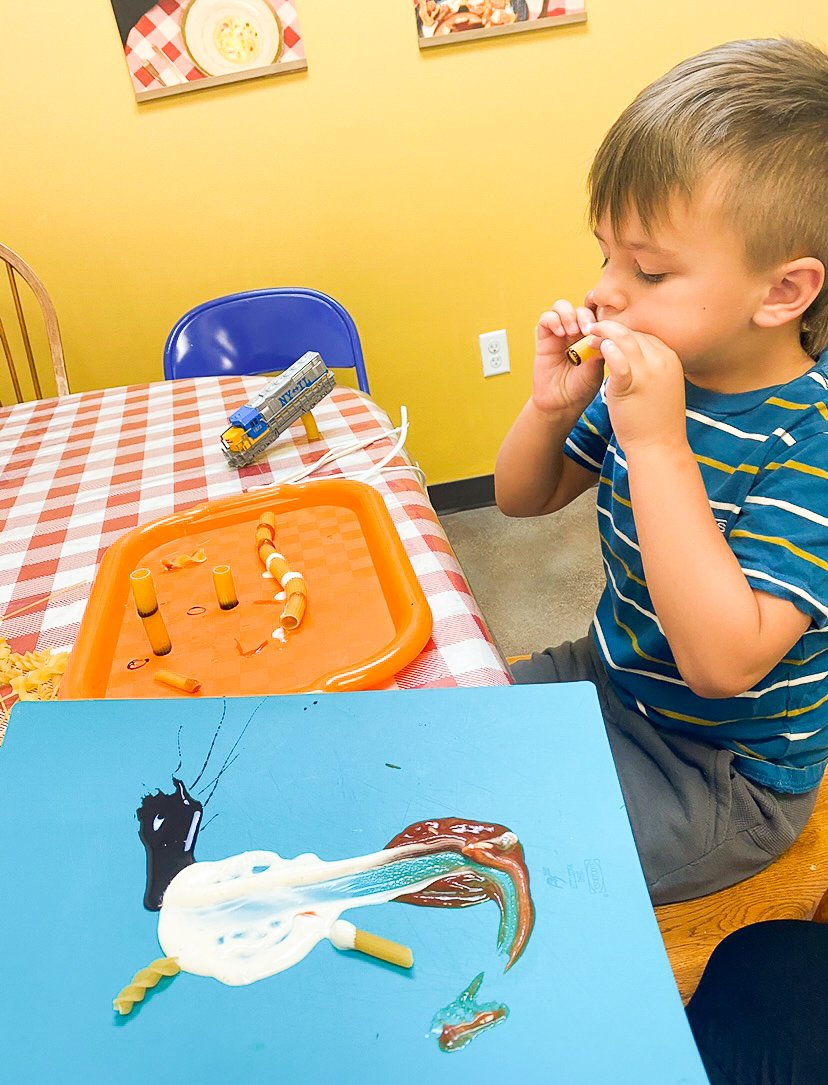Food Therapist Farmingdale: Nurturing Positive Eating Habits
Wiki Article
Navigating the Path to Successful Feeding: Ingenious Methods and Interventions for Reliable Feeding Therapy
Are you having a hard time to locate efficient strategies and treatments for effective feeding therapy? Look no even more. This short article will guide you with the path to success, providing innovative strategies to evaluate feeding difficulties and established achievable goals. With evidence-based techniques, you'll find out just how to address sensory processing concerns and utilize assistive technology and flexible equipment. And also, we'll reveal you the value of working together with households and caregivers for optimum feeding results. Get all set to browse the path to successful feeding!Assessing Feeding Obstacles and Determining Goals
You must begin by analyzing your youngster's feeding obstacles and recognizing specific goals for their therapy. This step is vital in creating a reliable feeding treatment strategy. Begin by observing your child's feeding habits and patterns. Seek any hostilities or problems they might have in the direction of certain foods or appearances. Make note of any type of physical or sensory issues that may be influencing their capability to eat. You can after that set particular objectives for their therapy once you have actually recognized these challenges. These objectives ought to be sensible and achievable, focusing on improving your kid's feeding skills and total nutrition. You might establish an objective for your child to be able to tolerate a larger range of structures or to self-feed with tools. It's essential to interact these goals with your child's feeding therapist so they can tailor the treatment sessions to address these specific challenges. By examining your youngster's feeding obstacles and setting goals, you are taking the initial step in the direction of helping them establish effective feeding abilities.Implementing Evidence-Based Methods for Feeding Treatment
Implementing evidence-based techniques for feeding treatment can lead to positive end results for kids. You are making sure that the interventions utilized are sustained by clinical research and have been verified effective when you include these techniques into your kid's treatment plan. This method increases the probability of success and assists attend to the details feeding obstacles your youngster may be experiencing.By adhering to evidence-based strategies, you can offer your youngster with the very best possible treatment and assistance. These approaches might consist of using a selection of sensory experiences during nourishments, such as checking out different textures and tastes, to motivate acceptance of brand-new foods. In addition, implementing behavior alteration methods can help resolve particular eating habits and advertise healthier eating patterns.
An additional crucial element of evidence-based feeding therapy is involving the family in the treatment process. By providing education and learning and assistance to caregivers and moms and dads, they can play an active duty in assisting their child conquer feeding challenges. This joint technique boosts the performance of therapy and promotes long-term favorable modifications in your youngster's consuming routines.

Dealing With Sensory Handling Issues in Feeding Therapy
Attending to sensory processing issues in feeding therapy can be challenging, but it is vital for advertising a positive eating experience for youngsters. When you run into a youngster with sensory handling problems during nourishment, it is vital to understand that their responses to particular structures, tastes, smells, or also noises are not deliberate (food therapist long island). By recognizing and resolving these concerns, you can help develop a helpful atmosphere that encourages healthy and balanced eating habits
This technique enables the child to come to be acquainted with the food and its sensory residential or commercial properties at their very own speed. Furthermore, using a range of structures and flavors can assist desensitize their sensory system and broaden their food preferences.
Engaging the child in sensory play activities can also be beneficial. Urge them to check out various structures, such as squishing, squeezing, or touching numerous food products. This try this can aid stabilize sensory input and minimize hostilities to specific textures.
An additional vital element is supplying a structured and tranquil eating setting. Reduce disturbances, such as loud noises or brilliant lights, which can bewilder their senses and hinder their capability to concentrate on consuming. Creating a predictable regular and utilizing aesthetic schedules can likewise assist the child feel even more secure and in control throughout mealtime.

Making Use Of Assistive Modern Technology and Adaptive Devices
Using assistive modern technology and adaptive equipment can substantially improve the feeding experience for youngsters with sensory handling problems. When you have difficulty with sensory processing, nourishment can be frustrating and challenging. Yet with the right devices, you can make it an extra pleasurable and successful experience.One option is making use of specialized plates and tools developed to accommodate your requirements. These tools might have textured deals with or a larger grasp, making them much easier to hold and control. Plates with split sections can assist separate different foods and stop them from touching, which can be a source of pain for some kids.
In enhancement to specialized tools and plates, there are likewise assistive devices that can be utilized throughout feeding. As an example, a weighted vest or lap pad can provide deep stress input, assisting to calm and manage your sensory system. A vibrating tooth brush or chewable jewelry can offer read oral sensory stimulation, making the act of consuming extra delightful.
Innovation can additionally contribute in improving the feeding experience. There are devices and applications available that can provide acoustic or visual cues, such as timers or prompts, to assist you remain concentrated and organized during nourishment.
Teaming Up With Families and Caretakers for Effective Feeding End Results
When working together with family members and caregivers, you can function together to develop a encouraging and caring environment for effective feeding results. By involving family members and caretakers in the feeding therapy procedure, you can obtain beneficial insights into the child's feeding practices, preferences, and challenges. feeding therapy long island. This collaboration allows for a holistic strategy to feeding treatment, resolving not just the physical elements however likewise the emotional and psychological variables that might influence a youngster's feeding capabilitiesOne secret aspect of collaborating with families and caretakers is providing education and training. By outfitting them with expertise and skills, they can actively take part in the feeding treatment procedure and sustain the child's progress beyond treatment sessions. This can include instructing them feeding techniques, techniques for taking care of mealtime behaviors, and recognizing the value of uniformity and routine in developing healthy eating practices.
Moreover, involving family members and caretakers in personal goal setting and treatment planning makes certain that their point of views and goals for the child are thought about. By interacting, you can establish achievable and sensible objectives that align with the household's concerns and worths - food aversion therapy long island. This collaborative technique cultivates a sense of possession and empowerment, creating a solid foundation for successful feeding results
Furthermore, regular and open communication with caretakers pop over to this web-site and families is necessary for reliable collaboration. By maintaining continuous discussion, you can attend to concerns, offer assistance, and make required changes to the feeding treatment plan as needed. This interaction also enables for sharing development updates, celebrating accomplishments, and recognizing any kind of challenges or obstacles that might develop.

Verdict
You have checked out various techniques and treatments for effective feeding therapy, such as analyzing challenges, applying evidence-based techniques, attending to sensory handling issues, and using assistive modern technology. Remember to always stay innovative and positive in your strategy to feeding therapy.It's crucial to communicate these goals with your youngster's feeding specialist so they can tailor the therapy sessions to deal with these specific challenges.Applying evidence-based approaches for feeding treatment can lead to favorable results for youngsters.Attending to sensory processing problems in feeding therapy can be challenging, however it is important for promoting a favorable eating experience for children. By including family members and caregivers in the feeding therapy process, you can obtain useful understandings right into the child's feeding challenges, practices, and choices. By equipping them with understanding and abilities, they can actively participate in the feeding treatment procedure and support the youngster's progress outside of therapy sessions.
Report this wiki page